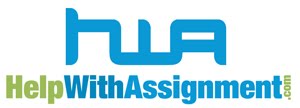Information has value to its owners, users, automated systems that must use it and government agencies that regulate access to it. For example, Wal-Mart stores could not operate efficiently without a 30 terabyte data warehouse that tracks the cost, profit, shelf-life and other metrics associated with every product sold in every store during the past five years.
Major domestic and international airlines could not efficiently schedule and crew billions of dollars of equipment, not operate their revenue capacity maximization models without the use of sophisticated databases and information systems valued over several billion dollars of replacement cost.
The business model for Visa, MasterCard International and American Express is based around card use data collection, account tracking, fraud analysis, customer billing and receipt collection information for hundreds of millions of credit and charge cards. The collective value of their databases and information assets is in the hundreds of billions of dollars – more than the annual budgets of all the nations of the world, except for the US and Japan.
Wall Street stock trading and financial institutions would not be able to open for business without having confidence in the accuracy of information used to conduct trades, base valuations on, or estimate earnings against. Accurate and trusted information is a core underpinning in market transparency and investor confidence. These are few examples which denote the Value of Information Assets in today's global business scenario.
Information is derived its value by being able to infinitesimally leverage information for financial, operational, analytical, managerial and social advantages. Once collected and verified as accurate, the value of information increases every time a successful transaction or usage occurs due to the cascade effect of each transaction triggering or enabling a second transaction and then a third and so on and so forth over time. The single transaction of selling 100 shares of stock, for example, may trigger purchases of capital goods such as automobiles, trucks, aircraft or property, which over time triggers purchases of other stock, maintenance and servicing of vehicles and property and employment of staff members. When viewed as a complete financial and transaction picture from beginning to end, accurate information enables transaction-based financial gain, marketing leverage, direct customer communications and collaborative partnerships that would be prohibitively costly or complex to establish and support.
For more details you can visit our website at http://www.helpwithassignment.com/IT_Security_Assignment_Help and http://www.helpwiththesis.com
